Best bass preamp pedals 2025: consistently great tone, wherever you are
Unlock bass preamp power with our expert picks from Orange, Ampeg, Electro Harmonix and more…
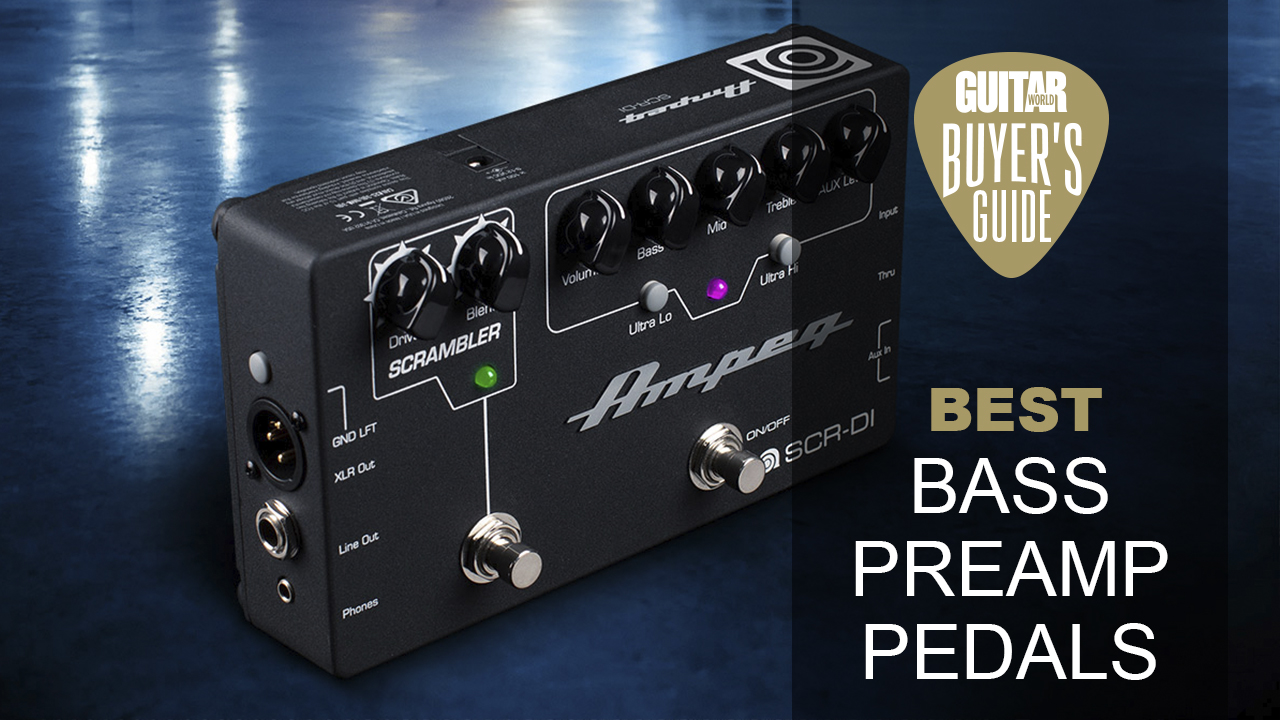
Enlisting one of the best bass preamp pedals can be an easy way to make monster bass tone totally portable. Whilst guitarists tend to haul their own amp with them wherever they go, it’s pretty common that bassists will be lumbered with whatever is lying about to plug into – and that can be a recipe for terrible tone.
Whether you’re plugging straight into a PA at a show or you're recording at home, a bass preamp pedal can be the most convenient way to give you a reliably awesome sound on the road or in the studio – and with our expert pick of the best bass preamp pedals, you can be sure to find the right one for you.
We've included some useful buying advice further down the page too, so you can find answers to any questions you have.
Best bass preamp pedals: Guitar World recommends
If you're looking for the most tonally versatile bass preamp pedal, it's hard to look past The Bass Butler from Orange. It has two channels that can blend together to provide anything from thick, warm bass to saturated overdriven bitey tones, topped off with a fantastic built-in compressor.
For modern players who want something sleek, with broad tonal shaping options and a truly Biblical level of distortion, the Darkglass Alpha Omega Ultra V2 is the pinnacle of modern bass preamps. However if your heart is set on more classic tones, the Ampeg SCR-DI delivers vintage Ampeg tones without the hassle of hauling a temperamental valve amp around with you.
Best bass preamp pedals: Product guide
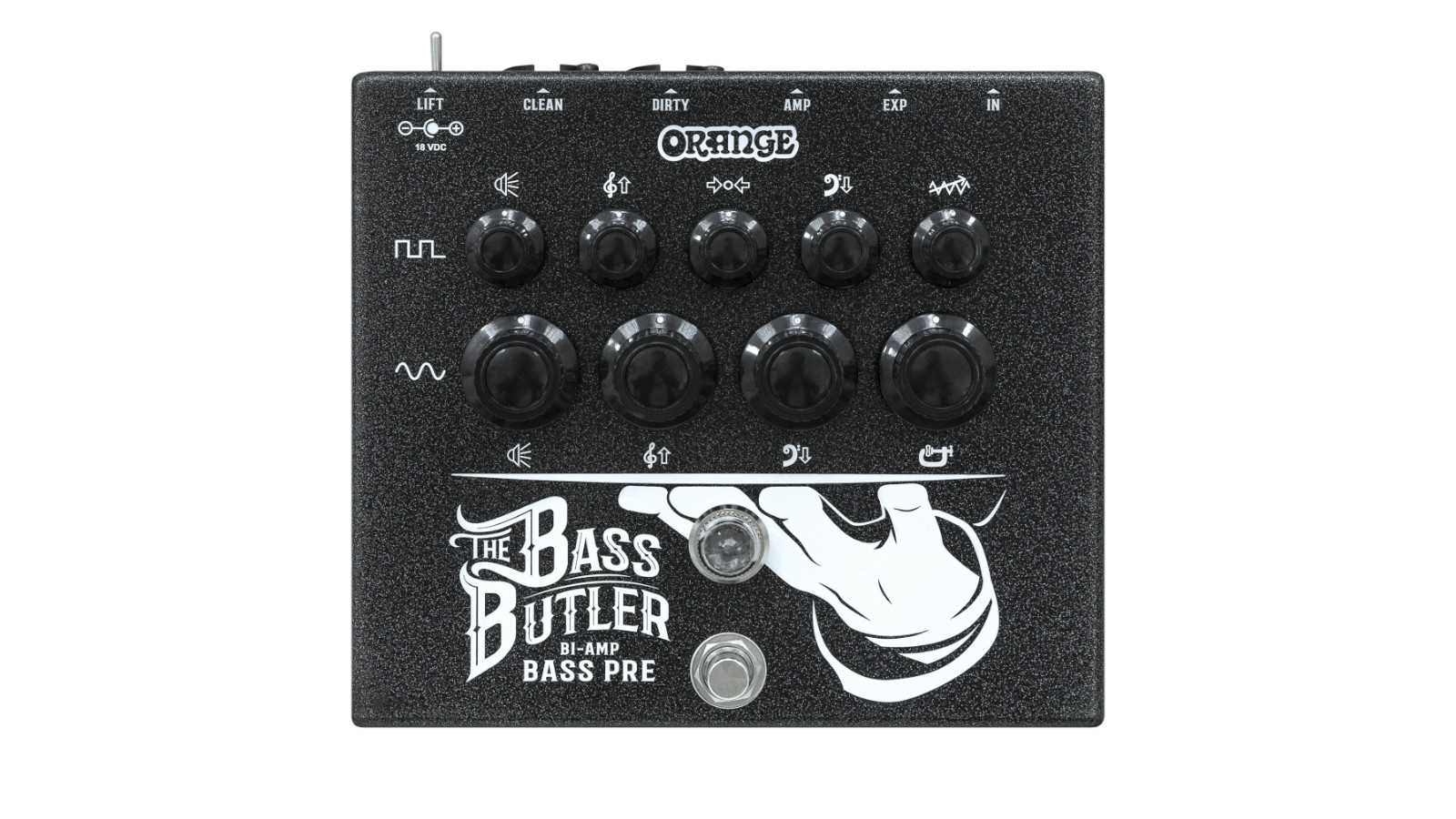
1. Orange The Bass Butler
Our expert review:
Specifications
Reasons to buy
Reasons to avoid
A distinctly modern preamp pedal built around ‘bi-amp circuitry’, which replicates playing with a ‘standard’ bass amp and an additional guitar amplifier. Rather than any digital modeling, the Bass Butler splits your signal at the input stage into two separate, parallel analog chains, giving you the flexibility of having two totally independent amplifiers all in one pedalboard-friendly package.
The class A optical compressor on the always-on ‘bass’ channel is a great addition that would make this a pretty tidy offering if that was all there was to the Bass Butler… but there’s a whole other side to this little animal! The second, ‘guitar’ channel, is where you can make the floor cave in, through the high-gain distortion stage, which can either be on all the time, or blended into your clean signal through the use of an external expression pedal.
Cabinet simulation for the clean channel is also a nice touch, giving DI recordings that real life feel, whilst separate ‘clean’ and ‘dirty’ outputs makes this an excellent tool for multi-track recording. If you’re not bothered about having a headphone output, this could be the ideal pre-amp solution for you.
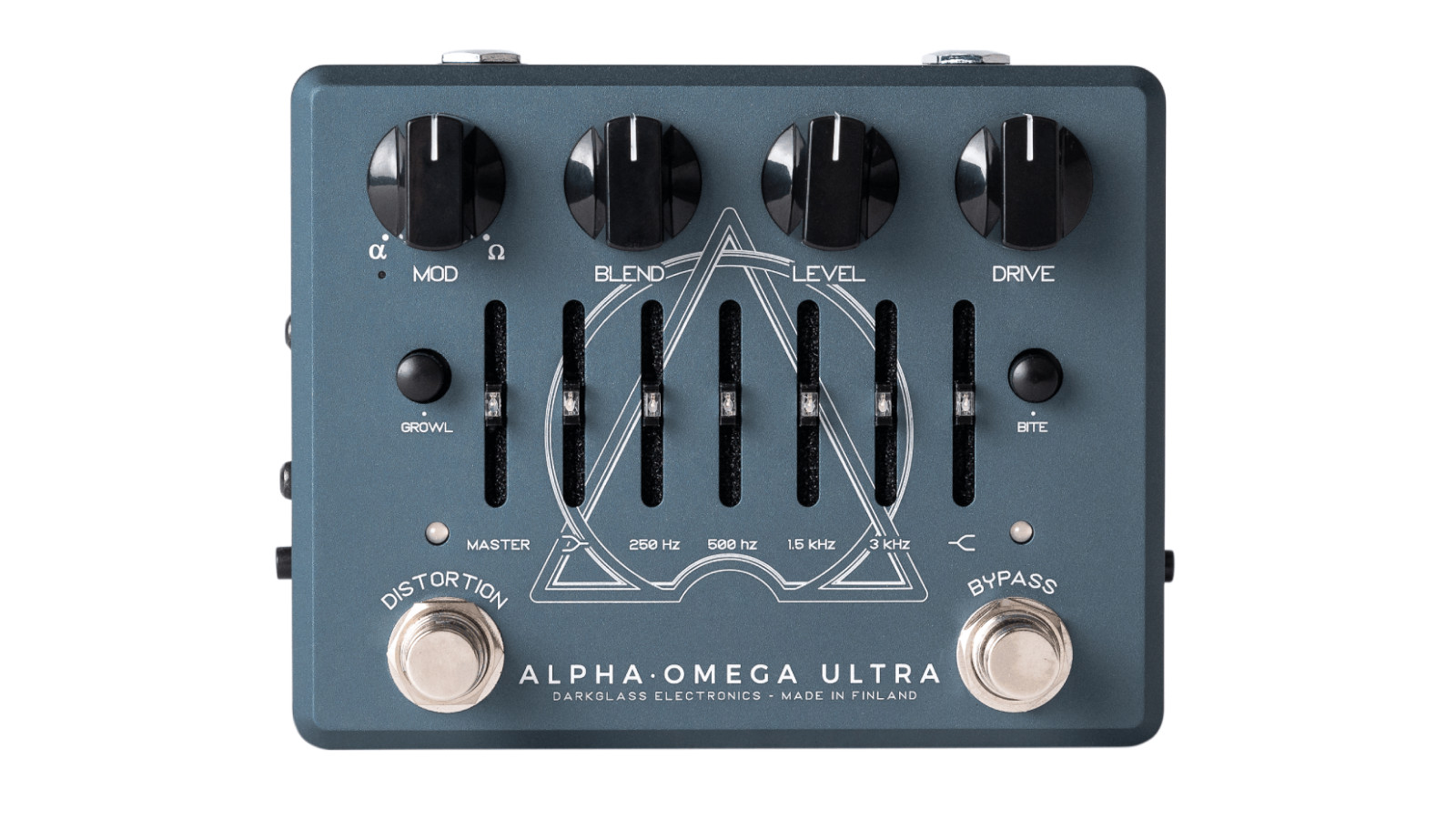
2. Darkglass Alpha Omega Ultra V2
Our expert review:
Specifications
Reasons to buy
Reasons to avoid
Perfect for metal players, the Alpha Omega Ultra V2 has extreme tonal shaping abilities with a particularly powerful 6-band graphic EQ, whilst additional ‘Growl’ and ‘Bite’ switches boost the bass shelf and high mids respectively.
The dual distortion circuits – Alpha and Omega – are superb in offering more driven tones than you’ll know what to do with, and the dedicated headphone output means you can use all that gain at home without upsetting the local wildlife. A special mention should also be made to the DI output, which is complete with a cab sim that can be changed via USB, even allowing users to upload their own impulse responses.
For those looking for a do-it-all bass preamp, this is a great option… however if you are in particular need of modern tones with seriously heavy distortion, nothing else comes close – this is the one for you.
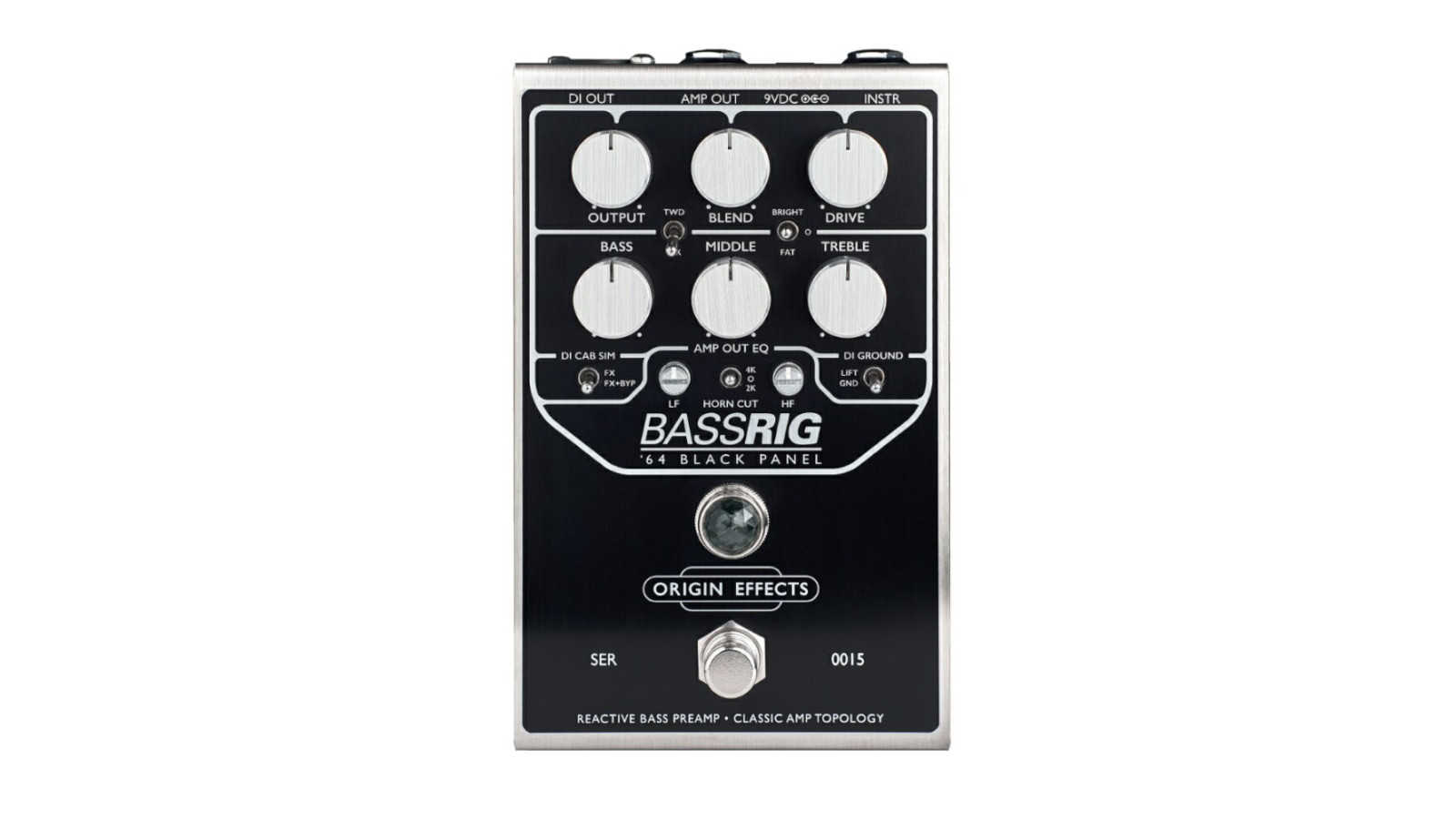
3. Origin Effects BassRig ‘64 Black Panel Bass Overdrive & Preamp Pedal
Our expert review:
Specifications
Reasons to buy
Reasons to avoid
Origin Effects have made a name for themselves for creating superb recreations of classic studio gear, and with the BassRig ‘64 they’ve crammed an iconic Fender Bassman tube amplifier into a small package.
Fat/Bright and Blk/Twd (Black/Tweed) switches provide loads of options that can give the user anything from authentic ’60s-style valve overdrive – for which the Bassman is famed – to deep low end. Best of all, any of these vast switching options can be mixed with your clean signal using the ‘blend’ knob to perfectly balance the sound and give a bi-amp feel.
Proprietary ‘Amp out’ EQ allows users to filter their output signal, meaning this pedal will work perfectly with any existing bass amplifier you may be using. The DI output has a speaker emulation based on the infamous 2x15” Fender Showman cabinets of the early ’60s with a reactive design that expertly mimics the relationship between an amp head and cabinet.
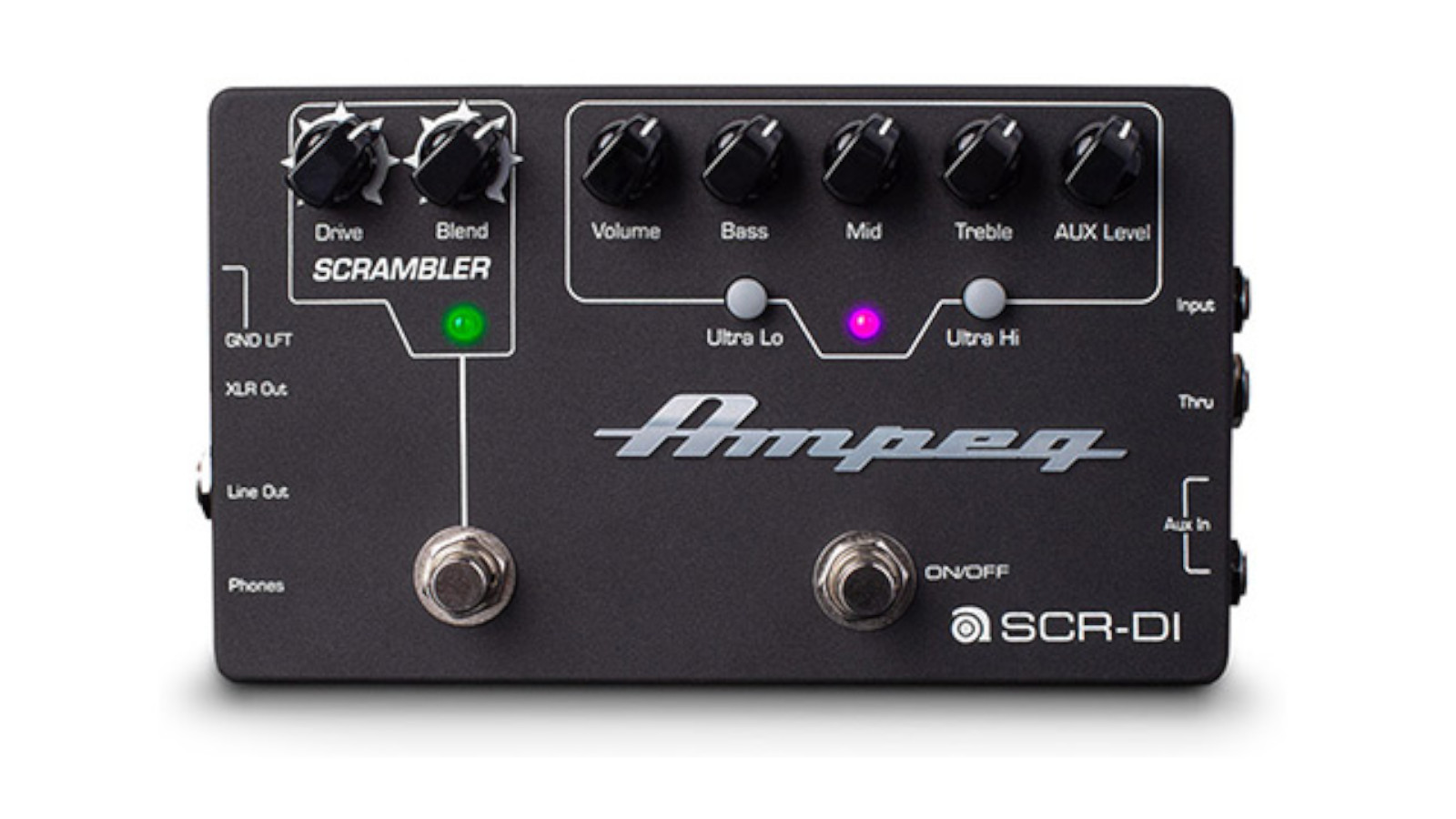
4. Ampeg SCR-DI Bass DI with Scrambler Overdrive
Our expert review:
Specifications
Reasons to buy
Reasons to avoid
Classic Ampeg tube tone, without the usual tube hassle. The SCR-DI also features Ampeg’s legendary ‘scrambler’ overdrive, which when kicked in makes this a preamp pedal for people who really want their bass to roar. With an additional footswitch to turn the Scrambler effect on and off, this is a superb way to get the kind of bark that you’d normally only achieve with the addition of external pedals.
Whilst the 3-band EQ doesn’t offer as much sculpting capability of some of its rivals, each band (Treble, Mid, Bass) offers the powerful cuts and boosts associated with vintage Ampeg EQs, plus the addition of ‘Ultra-Hi’ and ‘Ultra-Lo’ switches allows you to get pretty stupid with the extremes of your tone – Ultra-Lo is a particularly excellent way to blow people's socks off.
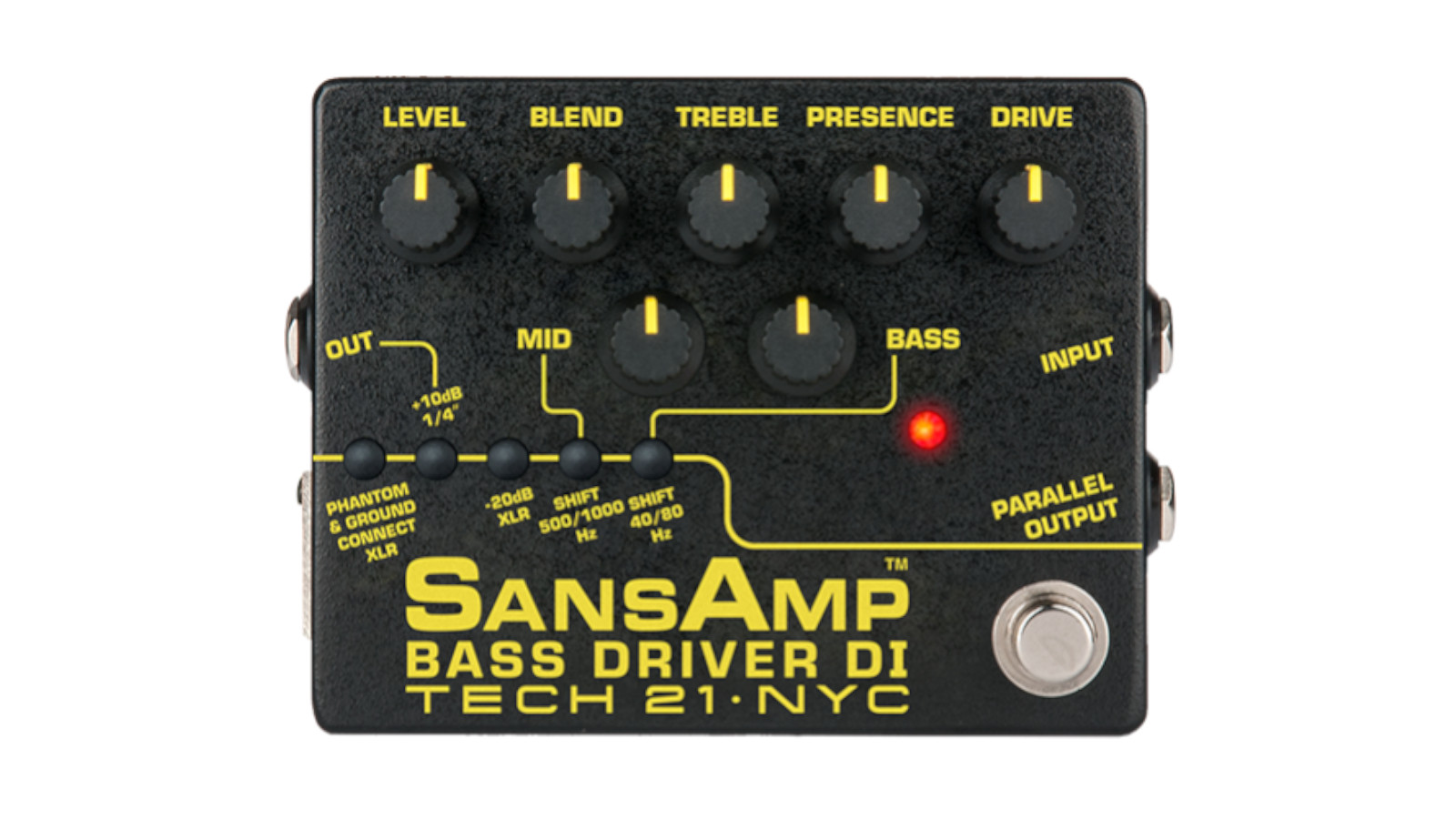
5. Tech 21 SansAmp Bass Driver DI V2
Our expert review:
Specifications
Reasons to buy
Reasons to avoid
If you think of bass preamp pedals, SansAmp is probably the first brand that comes to mind. Their pedals have featured on countless great pedalboards and loads of classic records, both as a preamplifier pedal and a standalone drive stompbox – such is the love for SansAmp's distortion circuit.
With superb, organic overdrive modeled to replicate tube break-up, the SansAmp can take you anywhere from a subtle growl to full-on chugging distortion. The upgraded EQ on the V2 model is particularly impressive, with three standard bands, including two switches to shift the mid and bass frequency bands, plus an additional presence control to offer definition to the upper range.
Though the Bass Driver doesn’t strictly have a conventional speaker emulation on its DI output, the whole sound has been modeled to mimic a classic tube amp with cab, so it feels truly authentic.
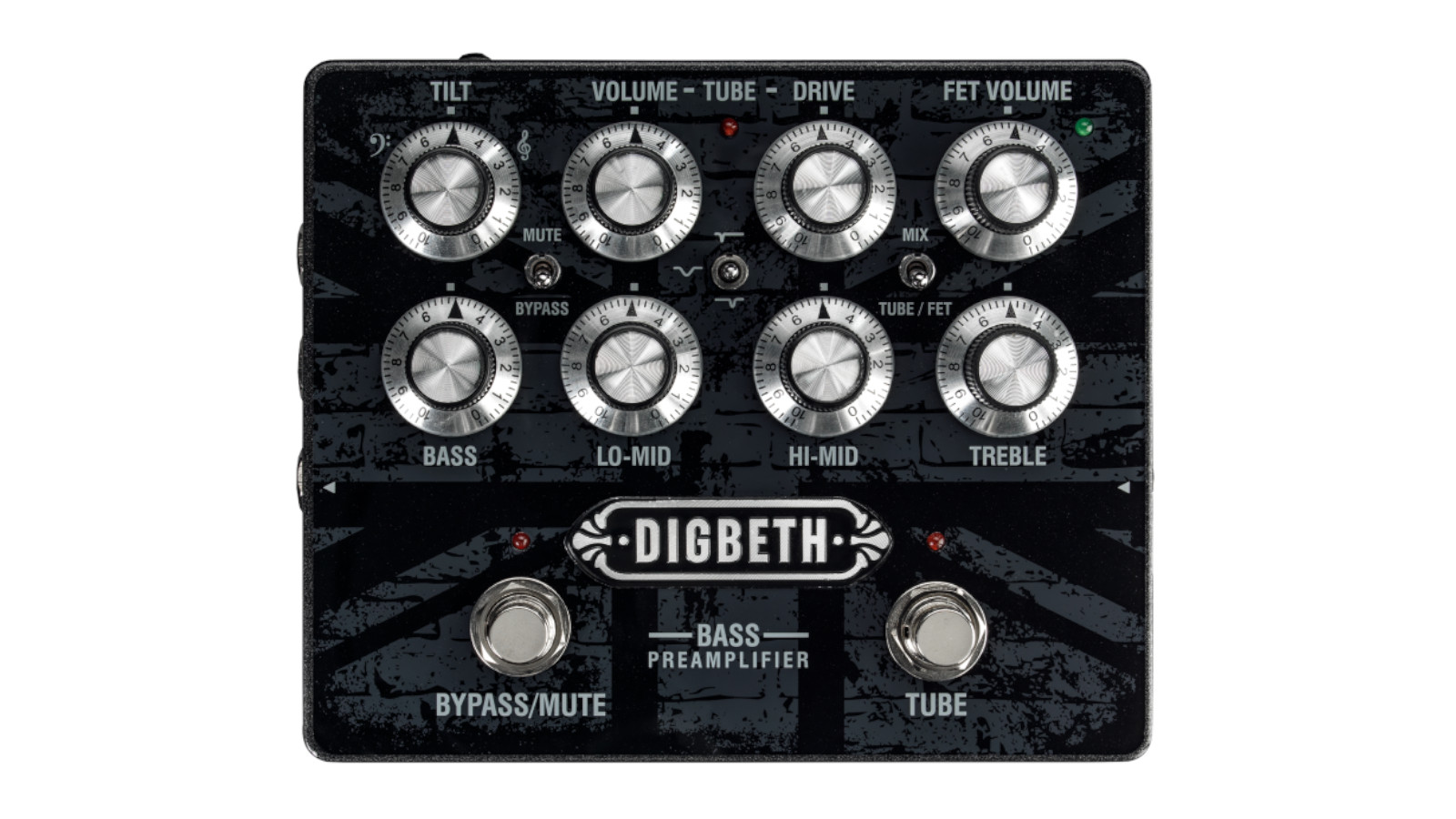
6. Laney Digbeth DB-PRE Bass Preamp
Our expert review:
Specifications
Reasons to buy
Reasons to avoid
Laney has a whole lot of pedigree in the world of bass and if you’re looking to sound like Geezer Butler – one of their most famous users – the Digbeth might be just right for you.
A four-band EQ, complete with switchable low-mid frequencies, gives ample tonal shaping control, whilst the additional ‘Tilt’ EQ provides a simple one-knob seesaw function to quickly cut treble and boost bass, or vice versa. FET and Tube signal paths with a blend option gives lots of variety, so there should be a tone for everybody.
The DB-Pre also has loads of great features, such as headphone output and Aux-in, which makes it one of the best options on this list for home practice. For how many features this packs in, it sits at a superb price point too. If you’re looking for a do-it-all bass preamp on a budget, the DB-PRE is a great option.
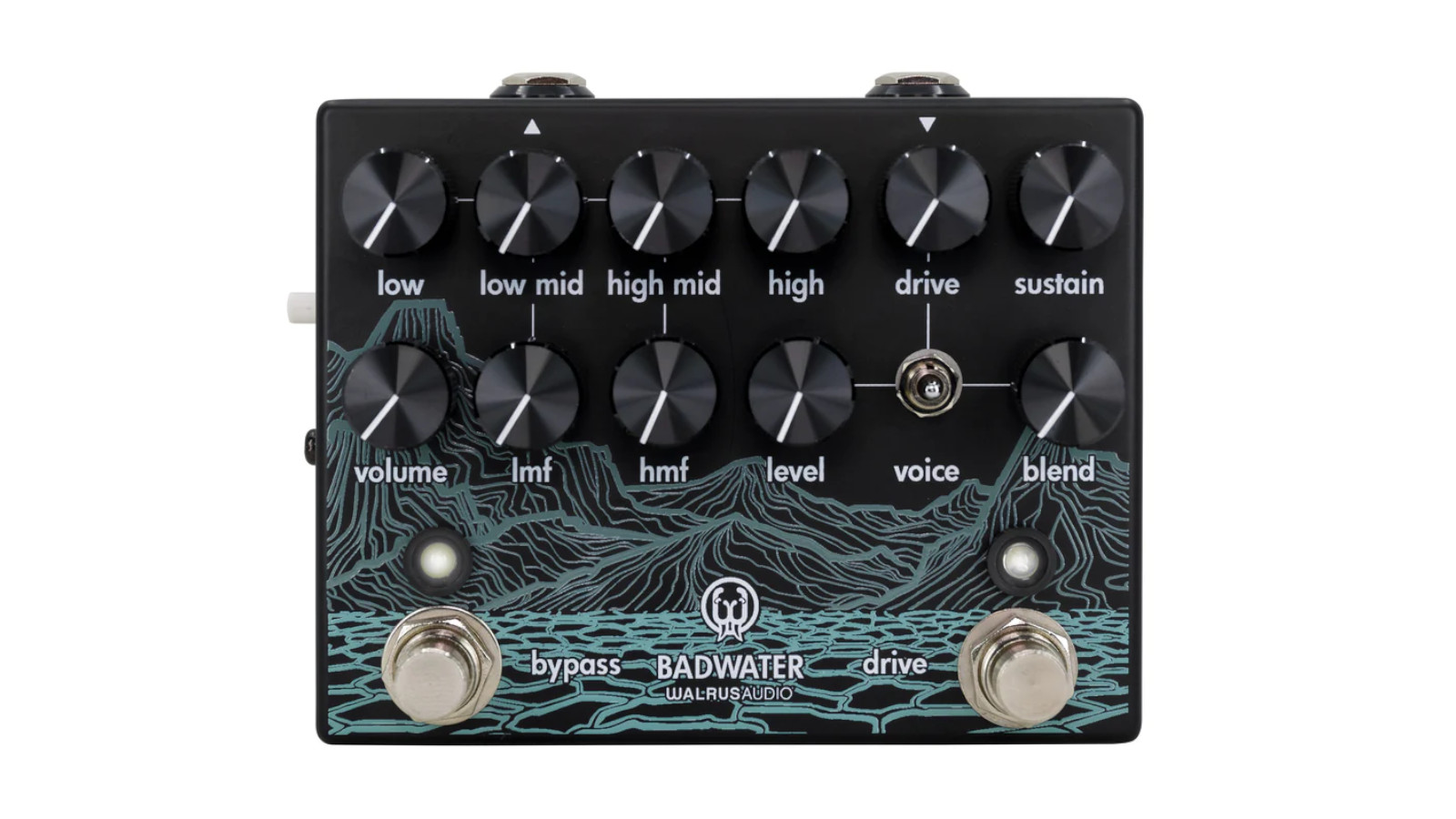
7. Walrus Audio Badwater Bass Preamp & DI Pedal
Our expert review:
Specifications
Reasons to buy
Reasons to avoid
As often is the case with Walrus Audio products, the Badwater bass preamp is a really smart, sleek but powerful product that the company describes as a ‘bass tone magnification device’.
With a four-band EQ, there’s plenty of sculpting power and with an additional LMF (low mid frequency) and HMF (high mid frequency) sweep control, that can be moved between 500Hz to 2.4kHz and 3.5kHz to 7.5kHz respectively, you can really dial in your exacting tonal needs.
The drive control has three switchable modes, which determines how the low and high end pass through the drive circuit, meaning you can achieve a tasteful bite or a full-frequency bass crunch, and the built-in optical compressor, found on the ‘Sustain’ knob, can help elongate notes and, when maxed, really add a super tasteful ‘squash’ to your sound.

8. Radial Tonebone Bassbone V2
Our expert review:
Specifications
Reasons to buy
Reasons to avoid
Though primarily an electric bass preamplifier, Radial has designed the Bassbone to work for just about any kind of stringed instrument, even including a piezo-optimized input for upright bass. It also has two inputs, allowing users to easily switch instruments during a show, with two independent level inputs, meaning you can set each channel perfectly for each instrument. If you play a set where you change to an upright bass, this is an extremely versatile option that would perfectly suit you.
As a brand synonymous with making superb DI boxes, it’s no surprise that one of the star features is the Dl, where Radial hasn’t taken any shortcuts. Features such as the phase alignment switch makes this a premium DI option as well as an excellent two-channel preamp pedal.
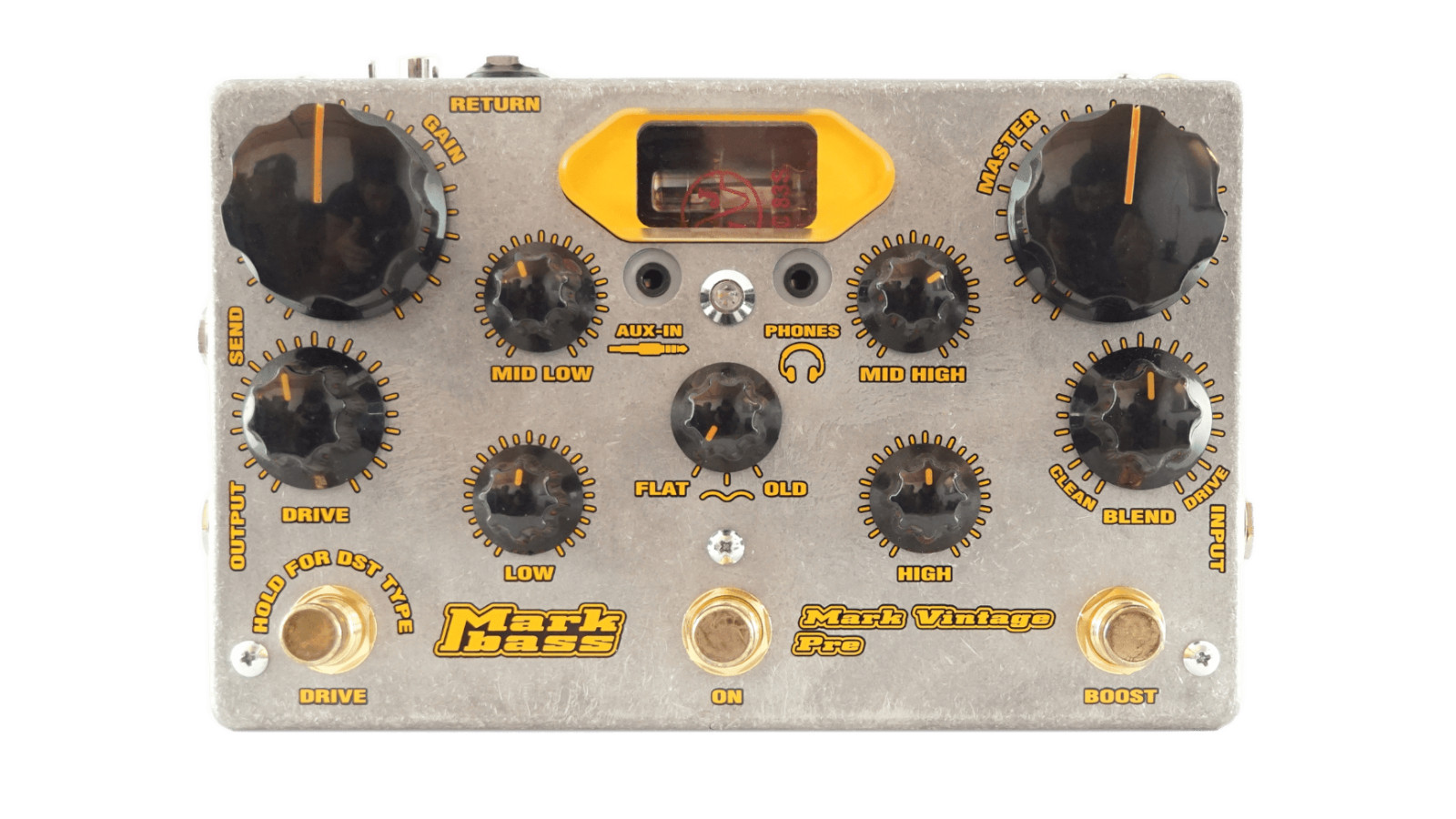
9. Markbass Mark Vintage Pre
Our expert review:
Specifications
Reasons to buy
Reasons to avoid
With an integrated 12AX7 tube, the Markbass Vintage Pre gives genuine valve warmth and overdrive, which you wouldn’t expect from a unit of this size. The four-band EQ offers great tonal shaping control, particularly across the midrange.
Pressing and holding the drive switch for a couple of seconds unlocks a secondary drive type, giving you the choice of a more modern, bitey sound, or a ‘classic’ organic overdrive.
Where this pedal goes above and beyond the competition is the digital outputs on the rear, giving you RCA and Toslink outputs with a three-way sampling rate switch to make this a near-perfect studio tool. The addition of headphone out and Aux-in is a nice touch for silent home practice too, making this a jack of all trades for live, in the studio, or at home.

10. Electro Harmonix Battalion
Our expert review:
Specifications
Reasons to buy
Reasons to avoid
As should be expected from the creators of the Big Muff, the Battalion’s pièce de résistance is its ample amount of gain. The three-way switch for the drive section allows you to change the relationship between the EQ and the distortion, by putting the EQ before or after the drive, or removing it altogether and only affecting the clean signal, which can give you a bi-amp feel. The gate knob helps to eliminate unwanted noise when not playing, though its one-knob design means it isn’t super flexible.
As a bang for your buck option, the Battalion is a great way to get a preamp pedal with loads of functionality, including four-band EQ, DI out and built-in compression. However if you’re looking for the same Battalion tone in a smaller, cheaper package, check out the Battalion Nano, which crams a host of these features into a stompbox.
Best bass preamp pedals: buying advice
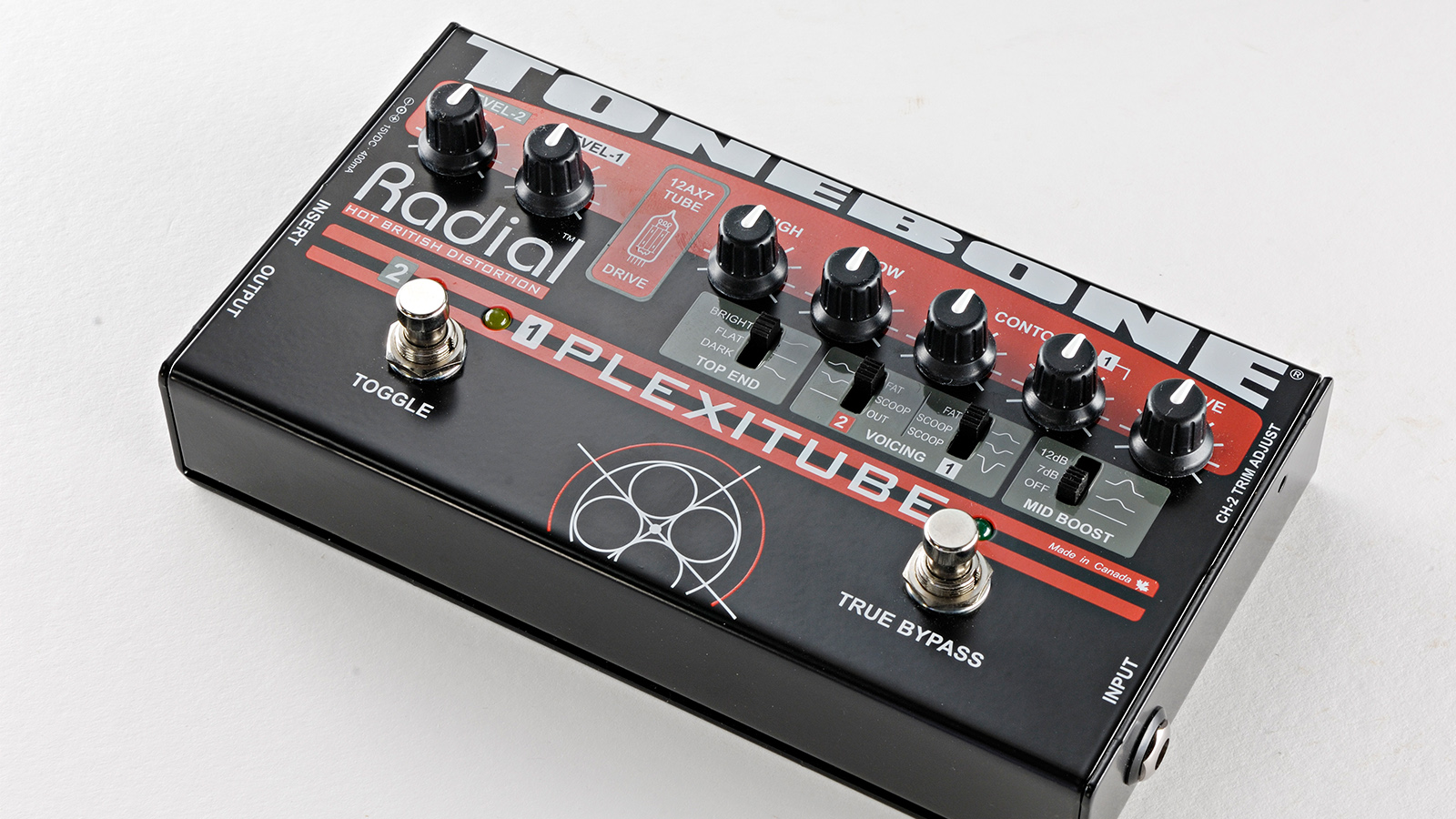
Choosing the best bass preamp pedal for you
You can trust Guitar World
There are many reasons you might want a bass preamp pedal – they’re perfect for studio use, giving you a punchy warm tone straight into your recording device, and they’re an excellent tool for gigging, offering consistency to your live sound, regardless of what the backline is. And as any gigging bass player knows, this can vary wildly!
If you’re looking to achieve a particular sound – perhaps something reminiscent of an Ampeg, or Fender – consider that some preamps will be modeled to replicate those classic sounds, whereas others may have their own unique tone. Most manufacturers will have video demonstrations with high quality audio examples of their preamps in action, which can give you a much more thorough understanding of the kind of tones you can expect – both through the front end of an amplifier and through the preamp’s dedicated DI output – and how to use their specific feature set, which can vary from pedal to pedal.
Some bass preamp pedals have the added benefit of additional features, such as built-in compressors, that can be extremely useful in managing your dynamics and are particularly useful for players of genres such as funk. Products such as The Bass Butler from Orange offer an all-in-one bass shaping tool that means you can pretty much plug and play wherever you want, with EQ, drive and compression all at your fingertips. But not all preamps are created equal, particularly if you’re looking for something with lots of gain. Whilst many preamp pedals will have a drive or distortion function, for some this may be more of an afterthought – so if you are looking for an especially gruff tone, bear in mind that particular brands are masters of gain (Darkglass, for example), whereas others may look to capture classic, cleaner tones.
Do I need a bass preamp pedal?
Most venues will take a DI signal before your bass amplifier, which means that all the delicious gain, EQ and any of the other minute electrical signals that evolve within your amp are totally lost and you’ll (often) find yourself plugged straight into a digital desk with little sonic substance. Adding a preamp to your pedalboard means the sound desk is greeted with a perfectly shaped tone, optimized for your sound.
A bass preamp pedal is a great solution for those who don’t have an amp, or on occasion use an amp that they’re not happy with – be that at home or from a provided backline on stage. But there’s also no reason you can’t consider using your preamp pedal almost as a ‘second channel’ for a bass amp that you love, switching it in to offer something tonally different for different parts of songs. Guitarists often have dual channel amps, why shouldn’t the bassist?
Other features to look out for
Every bass preamp pedal should offer at least a three-band EQ, providing shaping across the bass, middle and treble bands – though where these cross over can differ from pedal to pedal. Regardless of what genre you play, having a powerful EQ that can cut and boost to your needs can be the difference between filling out the audio spectrum or getting lost in it. Look for pedals with versatile EQs such as the Walrus Audio Badwater Preamp, which has a sweepable mid section that really helps to dial in those famously challenging mid frequencies.
DI outputs are an extremely useful feature on a bass preamp, meaning you can essentially run entirely ampless at any gig with a substantial PA system. Some DI outputs will have cab simulation, which will help to give you an authentic ‘amplifier’ sound. Whilst cabinet simulation isn’t an absolute necessity – and in some cases, if it’s a particularly poor cab sim, you definitely won’t want it – for those who have come from playing with an amplifier this may be a nice way to transition to an ampless rig, whilst retaining a similar sound and feel. The Darkglass Alpha Omega V2 even has the option of uploading different impulse responses to have your own simulated cabinet of choice.
Many bass preamp pedals also have a headphone output, giving the user the opportunity for silent practice at home or on the move, without having to haul around even a small amp. If you’re looking for a practice tool, a preamp pedal could be a perfect solution – we recommend the Laney DB-Pre as a great shout for this, particularly for players on a budget.
How we choose products for this guide
Here at Guitar World, we are experts in our field, with many years of playing and product testing between us. We live and breathe everything guitar related, and we draw on this knowledge and experience of using products in live, recording and rehearsal scenarios when selecting the products for our guides.
When choosing what we believe to be the best bass preamp pedals available right now, we combine our hands-on experience, user reviews and testimonies and engage in lengthy discussions with our editorial colleagues to reach a consensus about the top products in any given category.
First and foremost, we are guitarists, and we want other players to find the right product for them. So we take into careful consideration everything from budget to feature set, ease of use and durability to come up with a list of what we can safely say are the best bass preamp pedals on the market right now.
Read more about our rating system, how we choose the gear we feature, and exactly how we test each product.
Related buyer's guides
- Best bass amps for practice: work on your chops at home
- Best bass effects pedals for every type of player
- Best distortion pedals for bass: aggressive bass stompboxes
All the latest guitar news, interviews, lessons, reviews, deals and more, direct to your inbox!
Connor is a contributor to Guitar World and MusicRadar. Having been a guitarist since the age of 10, he's played bass and guitar in bands across the South West of England. He has a background in audio engineering, having worked in some of the UK’s best studios including Rockfield and Invada, and has a passion for recording guitar. He is always keen to discover the greatest gear for capturing tone, be that microphones, audio interfaces or cab simulators.

